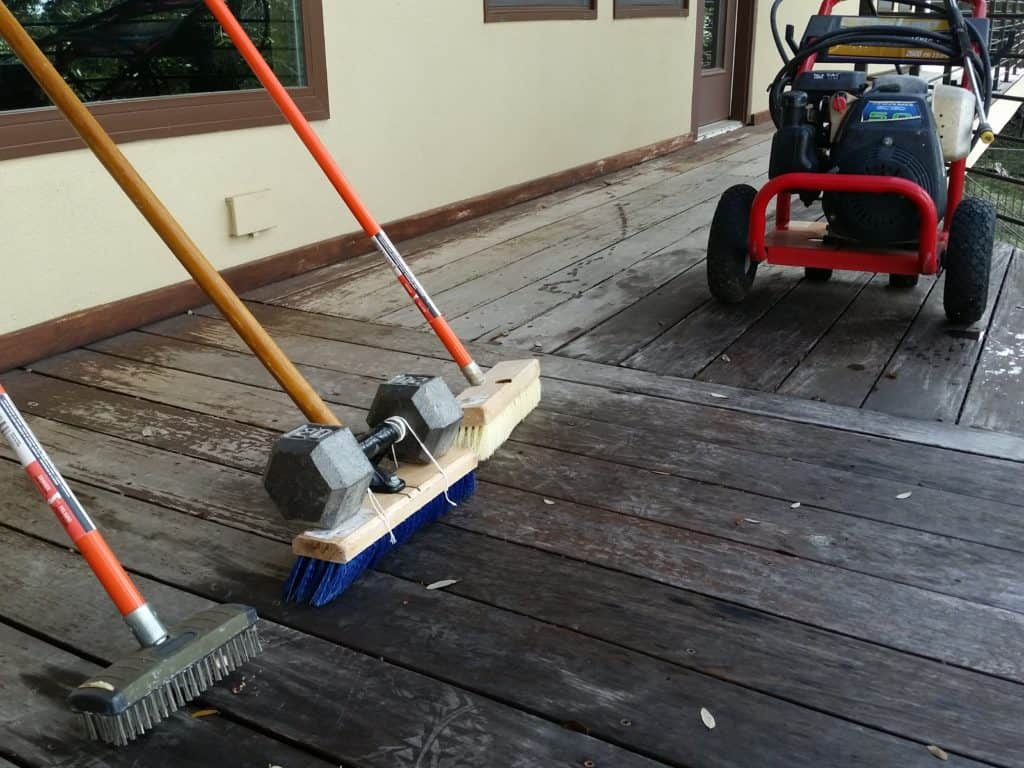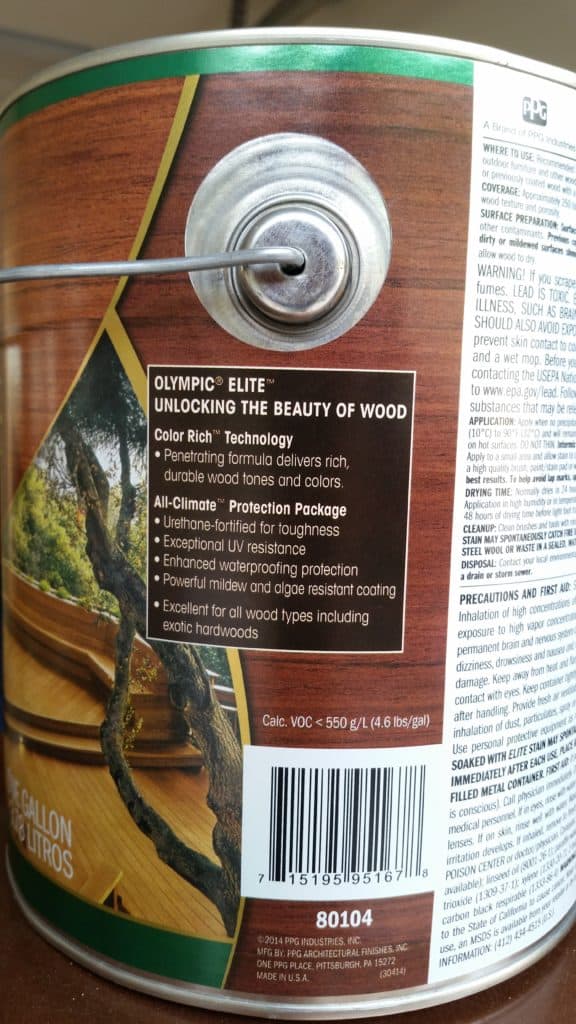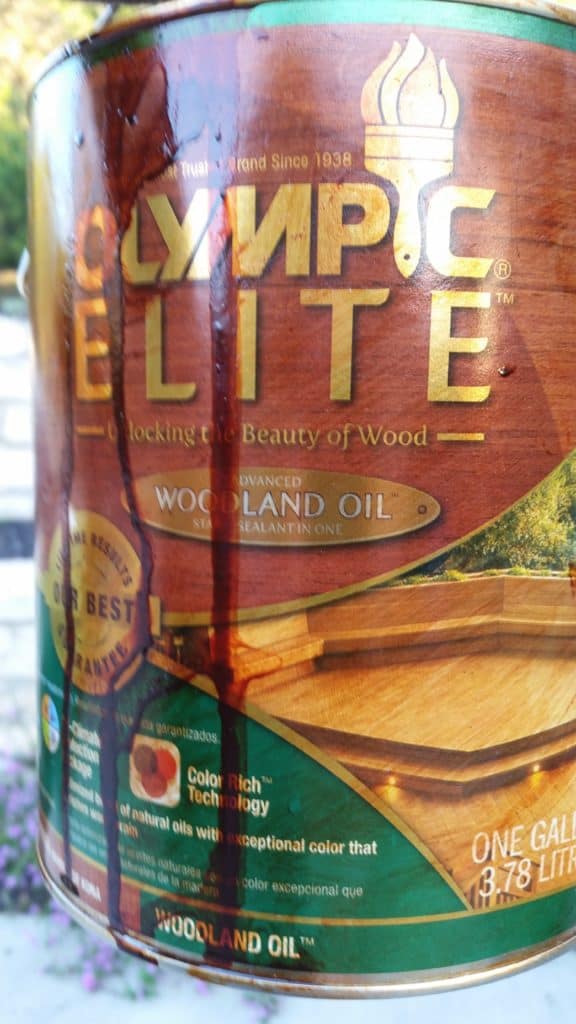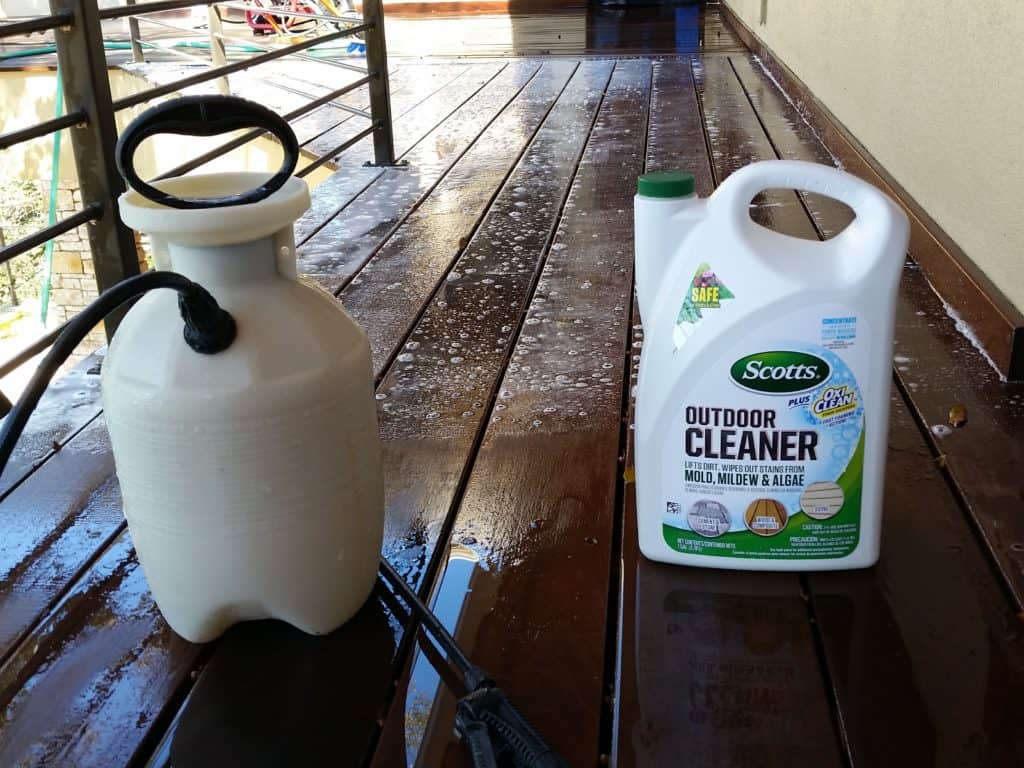
Over the years, I’ve seen outdoor decks evolve. I remember the days before readily available pressure treat lumber was around. Folks would build decks out of untreated, raw wood. Today, there is no excuse for that. Pressure treated wood is only 20% more than regular wood. Why would you go to all that trouble and expense to have a deck only last 10% (or less) of the lifespan that pressure treated lumber provides. However, even pressure treated lumber needs regular sealing – more on this later.
I’ve also seen sealers evolve. I can remember when Thompson’s Water Seal first hit the market in a big way. Our Ace hardware stores introduced that product to our local community when it was first readily available. Thompson’s is OK, for the price, but it does not contain as many solids as other better, more expensive sealers.
Just like paint, there really is no secret formula to a better sealer or paint. You just have to put more of the good stuff (the solids) in there and less of the carrier (commonly, either water or mineral spirits) You get what you pay for!
What’s Good For Decks is Good For Any Outdoor Lumber Preservation
Because of the growing popularity of outdoor living spaces (decks) over the years, better sealers started hitting the market… and I’ve used just about every one of them over the past 45 years. A side benefit of the deck sealing market is that we can use these same products to seal any outdoor wood, making the lumber last 10 times longer – or more.
Sealing an Ipe Deck
Our recent deck sealing project inspired me to make this post. This was no ordinary deck. This deck was made from ipe. *Please note, that these same procedures apply to sealing any treated lumber deck. Yes – sorry, treated lumber will also have to be re-sealed every few years…
Please note, that I do not recommend using ipe as a decking material for several reasons, but ours came with the house. Cost, environmental impact, and work-ability are just a few reasons not to use ipe… However, it was a great proving ground for me to find a super fantastic outdoor wood sealer / preservative for any type of outdoor wood.
If It can Penetrate Ipe, It Can Penetrate ANY Wood Deeper.
The fact that ipe is as hard as concrete or steel (literally) makes it a real challenge to get a sealer to penetrate. In fact, water still just beaded off the top of our 10 year old, grey and weathered ipe deck. As noted below, penetration is much better than top coating a deck – or any outdoor wood. It took a while for me to research and find the best ipe deck sealer. After reading numerous blogs, product reviews, literature and discussions with colleagues specifically about sealing ipe – I decided on a particular product line with the Olympic Brand. It’s their Elite – Woodland Oil Line.
Specifically – product number 80104, which is the Kona brown in their 80100 series. Man-O-Man the ipe soaked this stuff in like a sponge!! It turned out absolutely beautiful! You can find it in our state at Home Depot Here
Note, that there are two VOC levels for this Elite Woodland Oil line. The higher one is not available in many states. I do absolutely recommend the higher one if you can get it. At least for the first coat on a (at least 12 month old) ipe deck. “Permanency contributes LEED points and helps the environment!”
*More on our extensive trial of the lower VOC version, three years later on this same ipe deck further down. – Hint: My wife really liked the water cleanup of the lower VOC product. You can read the Product Data Sheets here:
Olympic Elite Woodland Oil Low VOC
Olympic Elite Woodland Oil High VOC


To Top Coat – Or – Penetrate?
Deck sealers come in two forms. Ones that leave a top coating (film) on the surface of the wood, and ones that penetrate deep down into the pores of the wood. Due to the severe nature of the outdoor elements, mainly the sun, we recommend a penetrating sealer.
Top coats will not only wear off faster, they wear off in chunks, leaving you with a mess to scrape off the next time you have to re-seal. This was the case with ours and it was a real pain-in-the-@$$ to get the old top coated sealer off. No matter what the marketing literature says, for any sealer, you will need to re-seal a deck once every two or three years – so make it easy on yourself the next time!
Preparation – Preparation – Preparation
As with any paint job, the three most important things are 1. Preparation 2. Preparation 3. Preparation. No kidding actually…
Pressure washing alone will not do the trick! It takes two steps – First pressure wash, then thoroughly clean with a deck cleaner. This not only removes contaminants, mold and mildew, it conditions the wood to accept the stain.
Please note: This Olympic Elite Woodland Oil sealer is a one coat product. In fact, if you try to apply a second coat, it will just leave a sticky residue on top. This is why proper preparation is important. You want to get the product to penetrate properly the first time!

Decking Sealing Tips
Safety Tip: The high VOC version is highly flammable – But worse yet, rags soaked with it will combust spontaneously! This was actually the first time that I had witnessed this phenomenon. I had always heard about it, but never seen it with my own eyes.
I had several cleanup rags soaked in the product laying in the metal paint roller tray I was using to roll it on. I looked down and they were starting to smoke!! I immediately threw them in a bucket of water, seconds before the flames came. “Note: In 1991, One Meridian Plaza, a high rise in Philadelphia, was severely damaged and three firefighters perished in a fire thought to be caused by rags soaked with linseed oil.”
Of course you must be careful with any oil based paint soaked rags, but products made with linseed oil, teak oils tend to be the worse at spontaneous combustion. I’m not positive, but I suspect the product has some linseed oil in it.
To properly and safely dispose of oily rags, Fire Departments recommends the following steps:
- Use a container with a tight fitting lid. A metal can is preferable but a plastic can or zip lock bag can work if nothing else is available.
- Place soiled and used rags inside and then fill the rest the way with water, seal the top and do not open it. This will prevent the oils from oxidizing, and thus keeping the rags from heating up and igniting.
- Contact your local garbage disposal company for their policy on disposal of the can and contents. Some companies will permit disposal in regular household trash.
Tip: This Olympic Elite Woodland Oil sealer is a one coat product. In fact, if you try to apply a second coat, it will just leave a sticky residue on top. This is why proper preparation is important. You want to get the product to penetrate properly the first time!
Tip: Remember to seal the ends of the wood after cutting. When the grain is exposed, the moisture level can change and spread throughout the wood. Applying sealer to fresh cuts slows the process and helps prevent splitting.
Tip: You must wait for the new wood to dry out a little before sealing. I don’t care what the “marketing” label says about being able to apply it to “wet” wood. The drier the wood, then more penetration you will get. For treated lumber, this takes at least 6 months, depending on the climate you live in. On ipe, it can take several years. There is a ton of oil in this exotic wood that has to get leached out by the elements. On raw wood, it can be dry in as little as two months – depending on how old it was when you bought it.
Three Year Deck Re-Seal Follow-up
Our deck needed a little re-freshen three years after we applied the high VOC version of the Olympic Elite Woodland Oil. To our dismay, our local Home Depot stopped carrying the high VOC version. We decided to give the lower VOC version a try. It’s their 80110 Series. So to match our original Kona Brown we need product number 80114.
It turned out fine. Especially since we were just going over the same color. We notice that the penetration was good, but it did not soak in near as well as the higher VOC version did. The higher one soaked it up like a sponge!! However, my wife really appreciated the water cleanup of the lower VOC product. Since she was the one applying it – that’s what’s important! The higher one requires mineral spirits to clean up. In my opinion, this lower VOC version will have to be re-applied more often. Which is actually worse for the environment! You can read the low VOC Product Data Sheets here:
Olympic Elite Woodland Oil Low VOC

